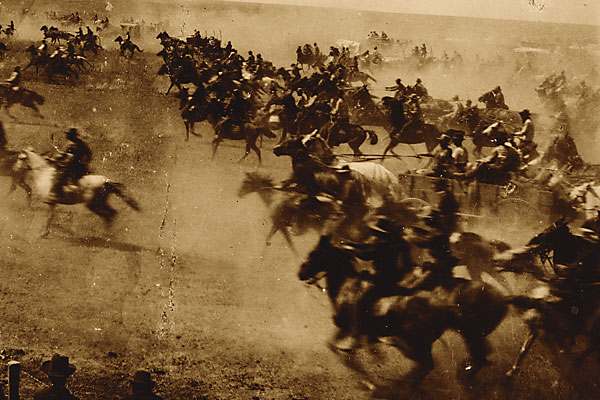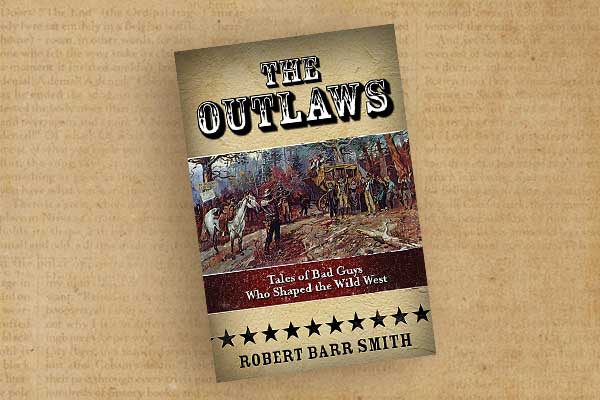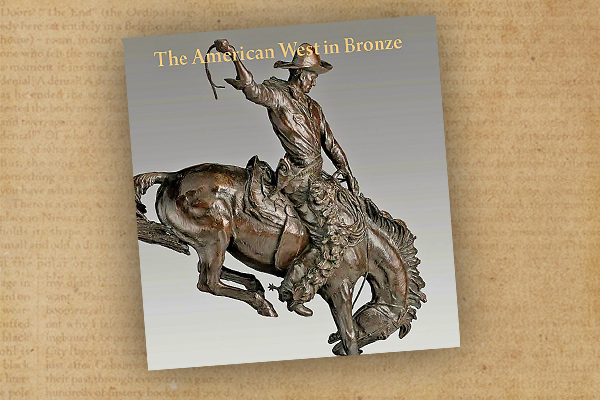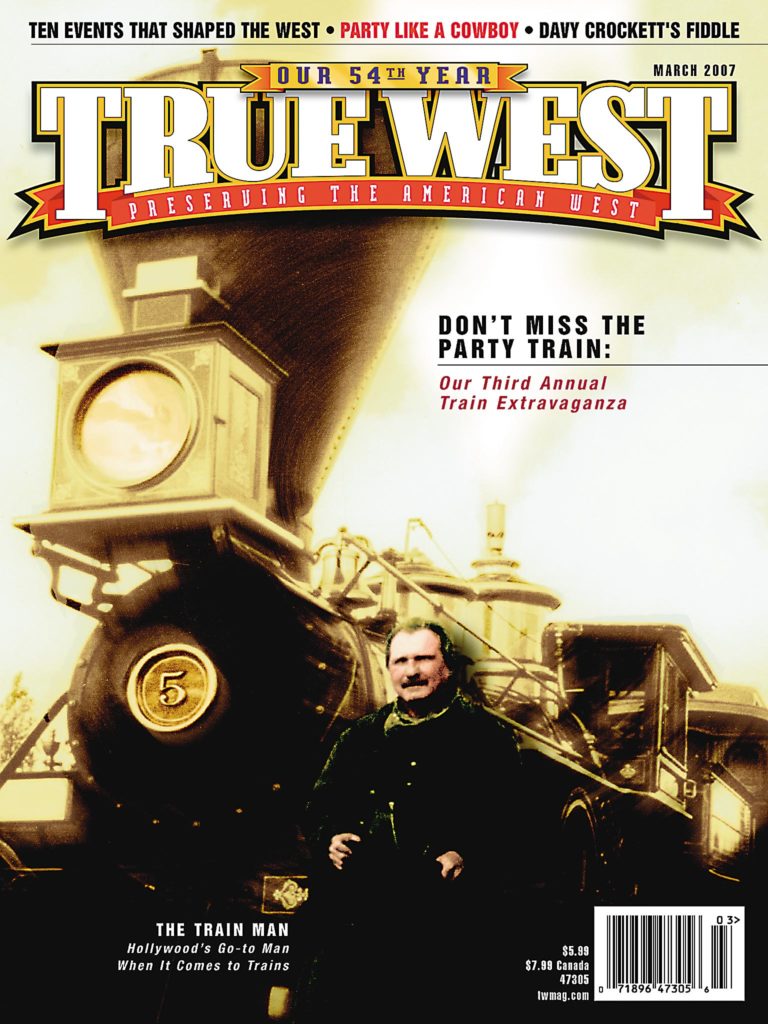
The men and women of the Old West are among the most cherished figures in Americana—the symbols of the making of a country and of hard work, honest determination, elemental existence, rugged independence and self-reliance.
The frontier provided a place where a man or a woman could re-invent themselves, or as Bret Harte said, “A place where you could get a fresh deal, all around.”
The West brought out the best, and sometimes the worst in mankind. It came to symbolize hope, opportunity and freedom, and today, America is defined by the ideals that grew out of that westward expansion.
The time was brief—crammed into less than a century. Other parts of the world had a frontier existence, but this could have only happened in America. It was the right time and place. In this vast land of superlatives were brawny mountains that held untold riches in gold and silver, untamed rivers, forbidding deserts, fertile plains and virgin forests.
The human inhabitants were as diverse as the land. It was the perfect environment for the creation of bigger-than-life individuals. They had an aura of romantic daring that clings to them still. The splendid grandeur of the proud Indians, the rough and tumble Mountain Men, optimistic gold prospectors, hard rock miners and the hard-riding, devil-may-care cowboys. Trying to keep the peace between this raucous group were the blue-coated soldiers and dedicated lawmen. They were all flamboyant figures, bigger than life. They are idols of an age turned to legend.
The dust has settled on the Chisholm Trail and the false front saloons are seen only on movie sets or in tourist towns, but the Old West lives on. In the words of the immortal cowboy artist, Charlie Russell: “You may lose a sweetheart, but you’ll never forget her.”
I’ve listed my favorite top 10 events that shaped the making of the American West. It’s dang near impossible to list by importance or significance because that’s mostly in the eye of the beholder, so I’m following a chronological order. Go to the TWMag.com forum and tell us which event you feel had the most impact in shaping the West.
Lewis and Clark Expedition: 1804-1806
At the time of the Louisiana Purchase, Americans had little knowledge of what lay “across the wide Missouri.” A superbly-led expedition, which aptly called itself the “Corps of Discovery,” literally opened the way for others to follow. Though William Clark, Meriwether Lewis and their men didn’t find the fabled Northwest Passage, they did return with vast scientific information about the new land.
Ashley-Henry Expedition of 1822
An advertisement in a St. Louis newspaper began with, “To all enterprising young men” who would be willing to ascend the Missouri River to its source. That ad attracted the likes of what became a who’s who in the annals of the lore of the Mountain Man, including Jim Bridger, Antoine Leroux, Tom Fitzpatrick, Hugh Glass, Jim Beckwourth, David Jackson and Jedediah Smith. They blazed a trail up the Missouri River, and when Indian hostility made it unprofitable, blazed a new trail to the central Rockies, creating that uniquely American reckless breed known as Mountain Men.
William Becknell & the Opening of the Santa Fe Trail in 1822
When soldiers from the new Mexican Republic invited the Indian trader to bring his trade goods to Santa Fe where he would find a welcome market, it began a long relationship of culture and commerce between the two young republics.
Becknell returned from his first expedition to Santa Fe with buffalo-hide bags full of Mexican silver and rich beaver pelts from the streams of Arizona. America was hard up for hard currency, the rich silver and gold discoveries were some three decades into the future. The wagons heading from Missouri to Santa Fe were veritable Wal-Marts on wheels bringing goods the Mexicans needed so it was a win-win situation for both countries. Except for a brief interruption during the Mexican War, the puddin’-footed oxen plodded up and down the trail until the arrival of the railroad in the 1880s.
The Texas Revolution
The history of the Texas Revolution has many parallels with the American Revolution. The Texans rebelled against the despotic Mexican dictator Santa Anna much the same as the Americans revolted against King George III. Its Lexington and Concord occurred at Gonzales, followed by the taking of San Antonio by the Texans. Its Sam Adams was William Barrett Travis and the George Washington of Texas was bigger-than-life Sam Houston.
Following the tragic Texas losses at Goliad and the Alamo, Sam Houston won a brilliant victory at San Jacinto and the Lone Star Republic was born. Texas would become the only republic to become a state. Texans have a proud history that shows in their citizens to this day. I’ve known people who lived all their lives in Chicago or New York and a month after relocating to Texas, they refer to themselves as Texans.
The Comstock Lode
The California Gold Rush gets more attention, but it was Nevada’s Comstock Lode, along with other rich discoveries of silver and gold in Montana, Colorado and Arizona, that turned this nation into one of the world’s wealthiest. When it comes to mineral strikes, the Comstock was the “Granddaddy of them all.” The mines produced 1 billion 2.5 million dollars in gold and silver. In today’s dollars, that would be over five billion dollars. And it made more millionaires (60) than anywhere in the West. The mine also bankrolled the Union during the Civil War, and the technology that developed there went all over the world. The Comstock was “where the world learned to mine.”
The Battle of Glorieta Pass
This battle—fought over March 26-28, 1862, in Glorieta Pass, just east of Santa Fe—has been called the “Gettysburg of the West,” and for good reason. The Confederacy had a plan to seize southern California to create an ocean-to-ocean country and thwart the Union blockade around the South. General Henry Sibley’s Texas Army invaded New Mexico in early 1862, sending a small force into Arizona while the main body fought its way up the Rio Grande. After taking Santa Fe, soldiers headed east into Glorieta Pass on their way to capture the Union supply base at Fort Union. They engaged in two fierce battles with the Colorado Volunteers and although they defeated the Yanks on the last day, the battle was lost when Maj. John Chivington led his Volunteers on a daring raid across a broad mesa, dropping down behind the Confederates. They destroyed all the Rebel supplies and caused a full-scale retreat back down the Rio Grande. Had the Confederates continued their advance, they could have taken Denver and blocked the Overland Trail, thus cutting off the Union from California and the rich Comstock silver in Nevada.
Had this blockade gone into effect, the West might have also seceded from the Union, creating the “Republic of the Pacific.” Although contemporary reports claimed 30,000 Confederate sympathizers in California were ready to take up arms, the Union seized control of the “Golden State” and sent a large Union force into Arizona and New Mexico.
Had the Confederacy been more supportive of the plan, the West might have had a different history and the South might have won the Civil War.
First Cattle Drives from Texas to Kansas
Although these weren’t the first Long Drives (there had been some prior to the Civil War), these cattle drives created the legend of the cowboy—a huge myth that contains a whole lot of reality.
The Civil War had depleted the supply of beef in the North. At the same time, tens of thousands of longhorn cattle had been left untended when the Texas cowboys went off to fight for the Cause. Cattle were stagnating for lack of a market. It was the old story of supply and demand. Joe McCoy promised Texans that if they’d gather their cattle and drive them up the Long Trail to Abilene, Kansas, where the Kansas-Pacific Railroad was building a line, he’d have buyers with cash in hand to purchase their steers. McCoy proved to be a man of his word. The Texans took the risk. When they arrived in Abilene, the buyers were waiting and a new saying was coined, “He’s the Real McCoy.”
In the summer of 1867, 35,000 longhorns went up the Long Trail to Abilene, to be followed by millions in succeeding years, and America’s greatest legend was born.
The Long Trail refers to the various trails used to drive up cattle from Texas, including the Shawnee, Chisholm, Western and Goodnight-Loving Trails. As Kansas got more settlers, along with the tick fever carried by the Texas cattle, the drovers were forced to blaze new trails.
Building the Transcontinental Railroad
When California and the Oregon Territory became part of the United States, the dream of a Transcontinental Railroad began to become a reality. Beginning in 1857, stagecoaches were bouncing their way across the Southwest on a dreary 25-day journey to California. By the late 1850s, most Americans were in favor of a railroad to the Pacific. During the 1850s, the storied Army Corps of Topographical Engineers surveyed several routes that would eventually stretch their steel ribbons across the West. After Congress passed the National Railroad Act in 1864, the Central Pacific Railroad began building east from Sacramento, carving a path through the mighty Sierra Nevada, while the Union Pacific built west from Omaha. Rail splitters and gandy dancers performed Herculean feats setting grades and laying down track. Work progressed slowly at first but with the end of the Civil War, veterans were clamoring for jobs. On May 10, 1869, the two iron-bellied locomotives, the Union Pacific’s #119 and the Central Pacific’s Jupiter, chugged up and touched cowcatchers, and the East and West were joined at last.
In 1849, it took 166 days to go from coast to coast; with the coming of the Transcontinental Railroad, the journey took only 11 days.
The Battle of the Little BigHorn
Custer’s defeat at the hands of the Cheyenne and Lakotas on June 25, 1876, was the most famous Army-Indian battle in American history. It also marked the high-water mark of the Plains Indian warriors who were fighting to keep their lands.
The battle marked a turning point for the U.S. Army, too. Up until then, despite Fetterman’s Massacre on the Bozeman Trail a few years earlier, there was widespread belief that a company of cavalry troops could cut a swath through the whole Lakota nation. Yet the weapons the soldiers were issued were single-shot Springfield trapdoors with copper casings that jammed, while many of the warriors had armed themselves with lever-action Winchesters. It was a wake-up call for the Army—those warriors could and would fight like hell.
The Gunfight Behind the O.K. Corral
Many will question why I chose a street fight between lawmen and cowboys as one of the 10 most important events in the West, but hear me out. The feuding that led up to the famous gunfight was a microcosm of the many facets of the Old West.
Tombstone became an overnight boomtown as a result of prospector Ed Schieffelin’s fabulous silver strike in 1877. Like all boomtowns, the news attracted a wide gamut of frontier society, including entrepreneurs, hard rock miners, cattle ranchers, merchants, peddlers, shady ladies, saloonkeepers, real estate speculators, lawyers, con men, politicians, gamblers, gunfighters and cowboys. Everyone was bent on making their fortune at either mining or “mining the miners.” A laissez faire atmosphere was common in boomtowns where the general attitude among residents was “I’ll tolerate the way you do business if you’ll tolerate the way I do mine.”
Because of this, real estate speculators sold town lots they didn’t own and cattle rustlers brazenly sold stolen stock to local butchers without having to show proof of ownership. Prominent businessmen, concerned about the town’s reputation, prevailed upon the Earp brothers, Virgil, Wyatt and Morgan, to represent their “Law and Order” group. Johnny Behan, the Cochise County Sheriff, was considered ineffective in controlling the rustler element. The Earp brothers had several confrontations with the outlaw element in the months before the famous gunfight.
Politics also played a role in the feuding. Republicans, represented by the upper class of the town, were pitted against Democrats, which included county officials and the working class residents. The rustlers—better-known as “cowboys”—spent their ill-gotten money around town like drunken sailors and were generally liked by the common folk in Tombstone who generally considered the Earps aloof. Issues between Wyatt Earp and Behan accelerated when Wyatt began courting Behan’s girlfriend, a ravishing beauty named Sadie Marcus.
All of these events culminated in a street fight on October 26, 1881, behind the O.K. Corral. When the smoke had lifted, Cowboys Billy Clanton and Tom and Frank McLaury lay dead on the ground. At first, the citizens hailed the Earps’ action. But the Cowboy element began a campaign of character assassination on the Earps, and soon the community was divided. When they didn’t succeed in driving out the Earps, the Cowboys took vengeance by ambushing Virgil and crippling him, then assassinating Morgan. Since he wasn’t getting any justice in Cochise County, Wyatt, following the creed “an eye for an eye,” took the law into his own hands and gunned down three members of the Cowboy gang before leaving Tombstone, never to return.
That’s it in a nutshell. This spectacular drama, played out on the streets of Tombstone, would be the formula for countless Western movies in the 20th century. Today, thousands of men and women around the globe, decked out in 1880s garb, relive that October day in 1881.
America’s perception, the world’s for that matter, of the Old West—cowboys, gunfighters, law and order, good versus evil, white hats against black hats—Tombstone had it all.





